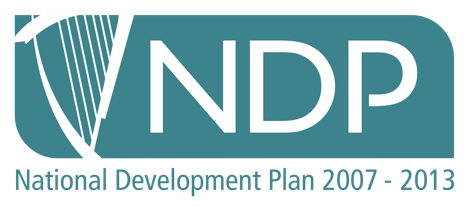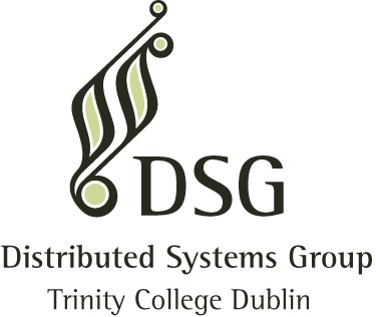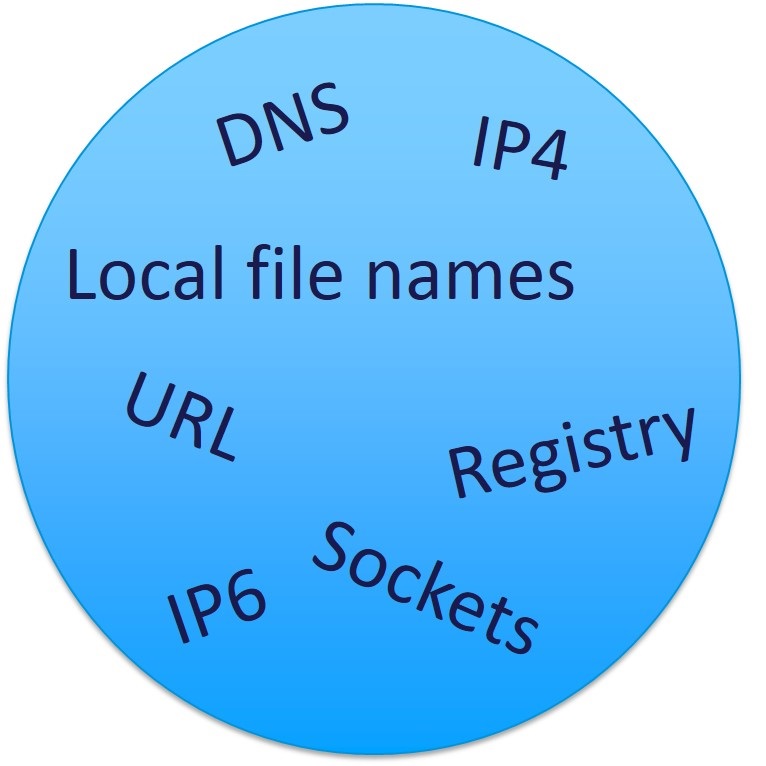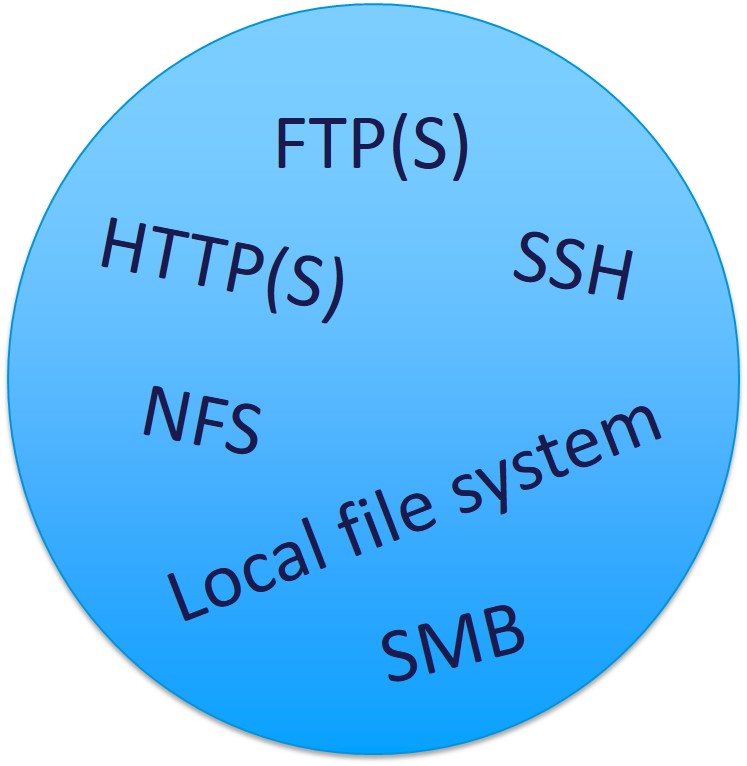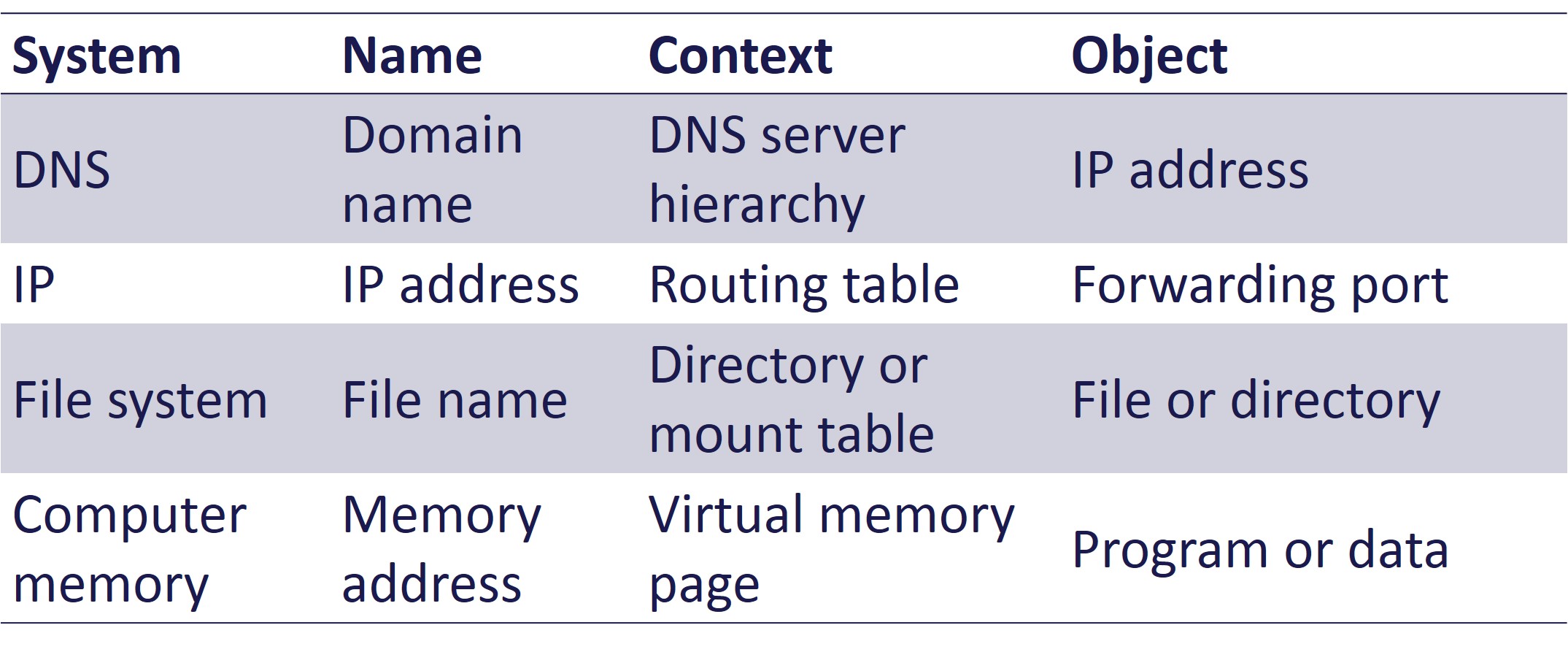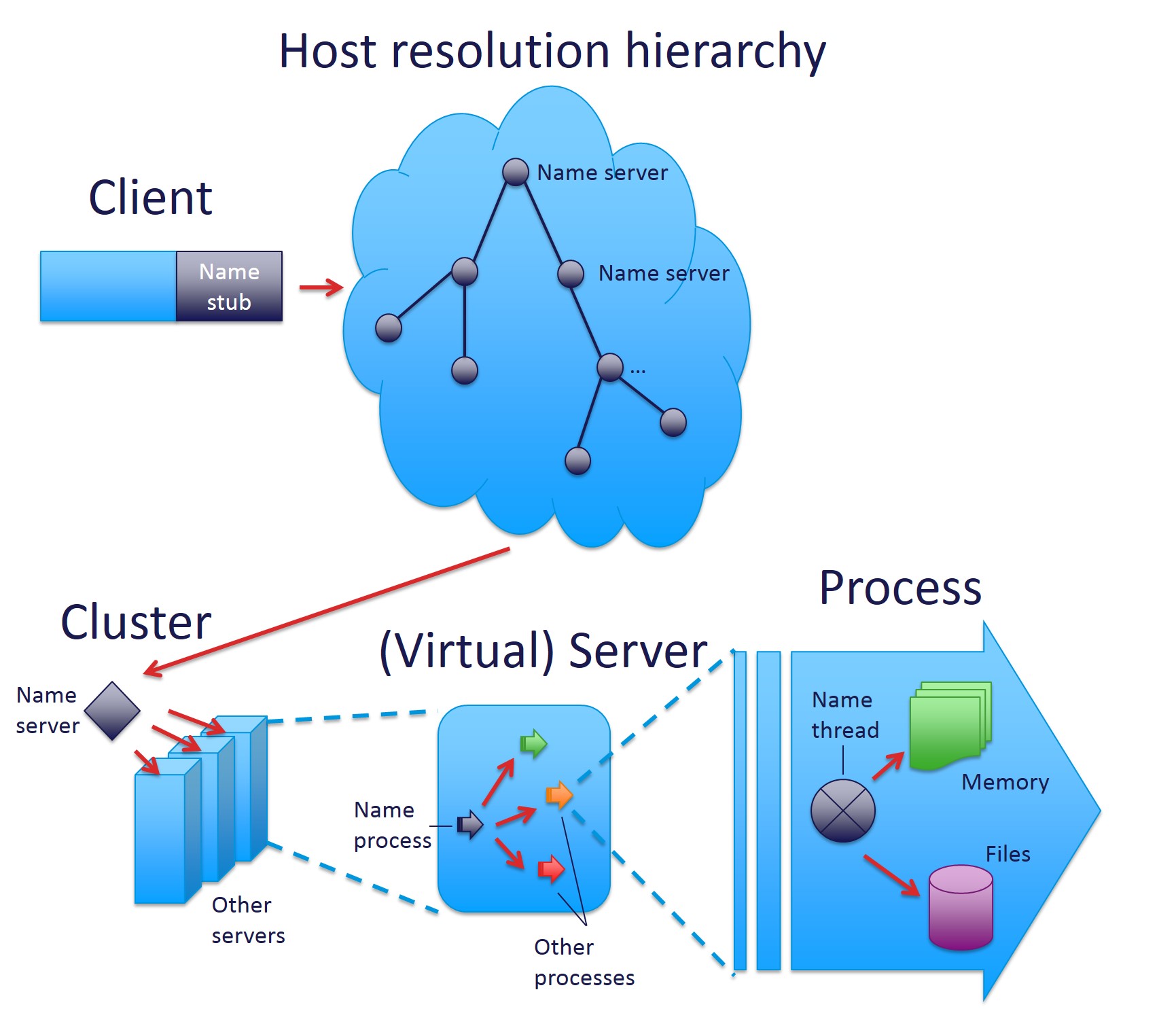A Homogenous Hierarchical Naming System for the Future Internet
Naming on today’s computer systems is a heterogeneous mess because consumers have to care about the choice of context and of protocol. As a result, names depend on technicalities irrelevant to the consumer. URLs artificially contain a protocol and two context-specific names such as:
<protocol>://<host name>/<file name>
The split between host name and file name in URLs is technical because End users do not care on which host files are located.They only care about where in the hierarchy the file is. Ideally the split should not be present. If any of these technicalities change, the name changes and this change affects the flexibility of the provider.
Contexts Protocols
Background
Vision
One global naming system is hierarchical, homogenous and also identifies clusters, files, processes, virtual servers, services, remote programs, … It allows mobile objects and dynamic mapping and is Secure.Producers can move objects or morph them from files to services or from processes to virtual servers without affecting the name.Consumers need only to know the name. It brings together existing naming systems beacuse it is pluggable, compatible and has no clean-slate revolution.The Back-ends comprises of DNS, files, memory, IP, CCN, … and as for Front-ends are concerned there are URLs, files, UNC …. It abstracts away protocols and contexts, because protocols and contexts are part of identified objects and sits between the Application and Transport layers.
Approach and Next Steps
We survey existing naming systems and analyze the full resolution process by comparing the use cases to today’s DNS-centric methodologies. We also investigated existing and future interdependence with transport protocols, host-local APIs and contexts. Finally, we established a theoretical foundation by the use of abstract algebra to describe name resolution.
People
Dirk Hasselbalch, Eric Jul, Mélanie Bouroche
Sponsors
